The H.L. Hunley was the world’s first combat submarine to sink a ship.
In the quiet of the night on 17th Feb 1864, eight men from the Confederate Army gathered on the beach on Sullivan’s Island outside Charleston, South Carolina. Wading into the sea, they climbed on board the “fish torpedo boat” as it was known, and down into the extremely cramped hull. Seven of the men hunched over the hand crank that turned the propeller, while the skipper, Lt George E. Dixon, steered the sub towards its target, the ships of the Union Navy blockading the port of Charleston.
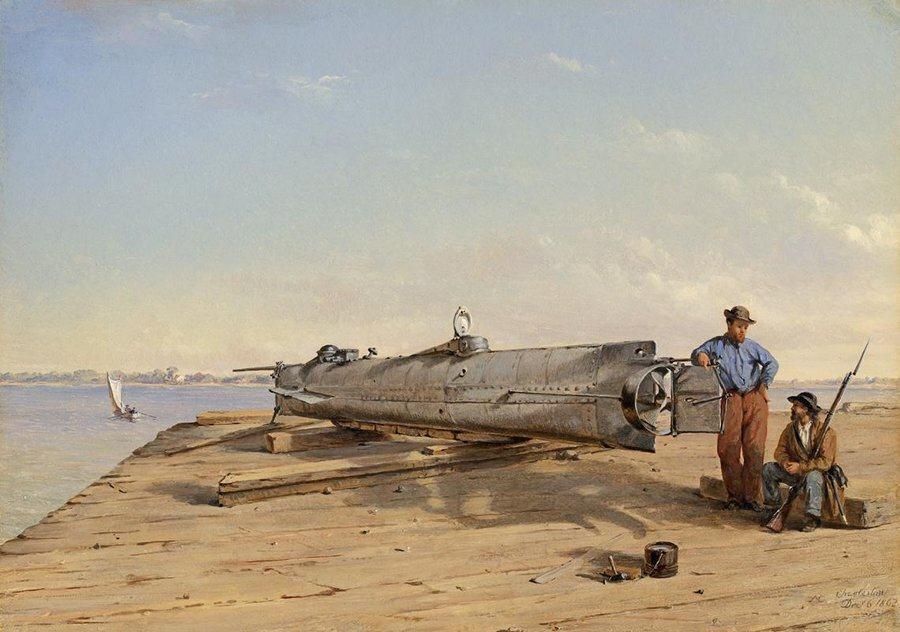
After what must have been a long and exhausting passage at 2-3 knots (max 4 knots) they eventually reached the USS Housatonic, planted their barbed torpedo and withdrew to detonate it. The explosion from the 135lbs of black powder wasn’t powerful by today’s standards, but it was enough to sink the Housatonic, with the loss of 5 crew.
The Hunley and her crew were never seen again.
… at least not until 1995.
Discovering the Hunley
Unfortunately, nothing is ever straightforward with the mysterious Hunley, and everybody wants a piece of her.For author, Clive Cussler, fiction and real life are closely intertwined. His lead character, Dirk Pitt, works for the National Underwater and Marine Agency (NUMA), an organisation founded by Cussler that actually exists and has discovered over 60 shipwrecks… including, possibly, the Hunley. Cussler first started looking for the Hunley in the seventies, and then returned for a third and final survey in 1995. This time they looked to seaward of the USS Housatonic wreck and when diver Harry Pecorelli III checked out an anomaly on the sea floor, he felt the ridge of the Hunley‘s conning tower.

(Photo: Friends of the Hunley)
Unfortunately, nothing is ever straightforward with the mysterious Hunley, and everybody wants a piece of her. Cussler is not the only person to claim her discovery. A local academic, Dr E. Lee Spence claimed to have found it in 1970 and lawsuits started flying.
Whoever found her, it was only after the Cussler discovery that plans began to be drawn up & funds raised to recover her. Once again, everybody wanted a piece of her and there was a strong claim from her birthplace, Mobile in Alabama, that she should go there. However the US Navy, who owns her, awarded her recovery & preservation to Charleston. The ‘Friends of the Hunley’ organisation was formed in 1997 and she was finally lifted to the surface (only 28 ft above her resting place) cradled gently in a frame, on 8th May 2000.
Once out of the water, she was taken to a special tank in the Warren Lasch Conservation Center in North Charleston, and put back under water to preserve her. This has been her home since.
The Hunley Museum
The raising of the Hunley almost two decades ago caused quite a stir. “Charleston came to a standstill,” says Kellen Correia, the President & Executive Director of the Friends of the Hunley. “It was one of those days when everybody stopped. In Charleston everybody knows what they were doing on that day.”
No surprise then that people wanted to see her. Rather like the Mary Rose in the UK, and the Vasa in Sweden, the first priority has been to arrest the decay of her hull and to recover the remains of her crew and the historical artifacts & evidence still inside her. Although made of wrought iron not wood, like Mary Rose & Vasa she has spent years being saturated with water & chemicals, while the slow and painstaking archaeological work was carried out. So the opportunity for the public to visit her has been limited. It was only three years ago that they created the museum displays to give visitors an understanding of what they were seeing.
Hunley is still a conservation project, so the museum is only open to the public on weekends. Nevertheless the Hunley is drawing between 38-40,000 visitors annually. The Friends of the Hunley expect to be at the Conservation Center for another five years before, hopefully, moving into a dedicated museum, probably at Patriot’s Point, which would be a logical location for her… but, as usual, everybody wants a piece of her and politics abound.
Visiting the Hunley
I was lucky to visit in a small group private tour which I organised with the director, Kellen Correia, but the format is standard. You are free to wander around the museum displays at your own pace, then visitors are guided into the lab end of the building where the Hunley sits in her tank, behind a glass wall. The glass is as much for our protection as the Hunley‘s. For the first dozen or so years she was kept under water, which was drained regularly to allow work on her, but for the last five years she has been bathing in a solution of sodium peroxide – nasty toxic stuff!
The highlights, beside the Hunley herself, are…
- A display of the crew. Again, like the Mary Rose & Vasa, they have tried to recreate what the crew might have looked like based on the evidence of the skeletons². In this case the figures and their facial reconstruction were created by a Smithsonian anthropologist working in conjunction with a forensic artist. The hair & beards were ‘artist licence’ but we know that Lt. Dixon was fair-haired.

The crew of the Hunley. Lt George Dixon on the left.
Crewman C Simpkins (3rd from left) has a pipe. There were four pipes found on board and he has a notch in his teeth that suggests he had his pipe lodged in his mouth pretty much most of the time. Likewise, next to him (4th from left) Seaman Frank G. Collins has a needle in his teeth rather like a toothpick. His father was a cobbler and the thinking is Frank chewed on a needle regularly, because, again there’s a small notch in his teeth, and the needle was found close by. Miller (6th from left) is a bit of a mystery man. He was one of the oldest men aboard (40-45), smoked a pipe and had the early onset of arthritis. He was of European origins and had only recently come to the USA (they can tell from diet). Research suggests that Lt Dixon found two volunteers from the German Artillery, one of which was Corporal J. F. Carlsen (5th from left). There was a Samuel Miller who served with Carlsen.Once again, nothing is straightforward with the Hunley. Her attack was basically a Confederate Secret Service mission run as a privateer, so there is no crew manifest. They are pretty sure they know who the crew members were, but they can’t be 100% sure. What they do know from bone analysis is that four of the crew were of European descent & four were from the United States.
- A mock-up of the Hunley interior that allows you to sit in the crew positions and turn the hand crank that drove the propeller. It feels cramped and gives some idea of what it might have been like for the crew.
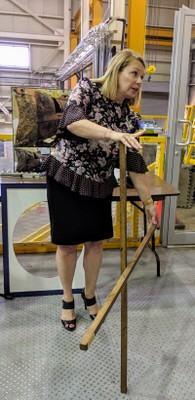
Kellen Correia
demonstrates
the height & width
inside the Hunley
But, I don’t think it is cramped enough. Kellen Correia used a wooden cross-tree stick to illustrate the interior dimensions and you can see, it was actually a tiny tube with the crew bent double all the time. Were they small guys? No! The average height was 5′ 10″. The tallest crew members were 6′ 1″ and 6′. The shortest was 5′ 6″. - The Lucky Gold Coin. Folklore had it that the Captain, Lt Dixon, always kept a 1860-minted $20 gold coin on his person, that had been given to him by his sweetheart, Queenie Bennett, as a keepsake and for good luck. He had it in his pocket at the Battle of Shiloh (6 Apr 1862, Tennessee), when he was shot. The musket ball² hit the pocket with the gold coin and ricocheted, saving his leg and probably his life. Rumour had it that from that moment he always limped and he always kept the gold coin in the same pocket for luck.
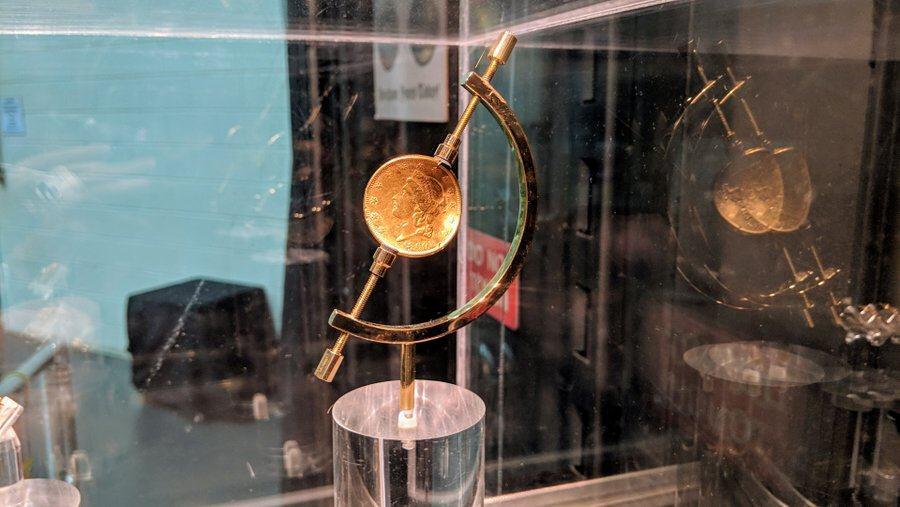
Dixon’s lucky gold coin
It turned out to be true. After a painstaking search the archaeologists found the coin (plus some jewelry and a pocket watch) among his remains, dented from the bullet and with an inscription on the back:Shiloh
April 6th 1862
My life Preserver
G. E. D..
- The keel blocks. Hunley was a surprisingly sophisticated machine. She was fitted with releasable weights on her keel. In an emergency, the cast iron blocks weighing 1,000 pounds (454 kilograms) could be dropped by turning three levers inside the sub, allowing her to regain her buoyancy and rise to the surface. But the keel blocks were never released, which brings us to the mystery of what happened to the Hunley and how did her crew die?
Mystery of the Hunley
Again, nothing is straightforward with the Hunley, and everybody wants a piece of her. There have been plenty of theories over the years, and raising her, hasn’t helped much!
For one thing, when they opened her, by removing the first plate, they found she was completely full of sand and silt, which had partially solidified. They first tried to x-ray her to try & find where any bodies might be, but the combination of iron, sand & silt defeated them. So they began to slowly excavate from the top down, expecting to find the bones mingled together under the two conning towers, which were the only escape route. They were astonished to find the crew, sitting in their assigned places and with no evidence of injury. The keel blocks were not released, and the pumps were not set to drain outboard.
So it doesn’t seem like the crew were panicking, or even thought they were in danger. That would rule out the ‘Lucky Shot’ theory – the crew of the Housatonic spotted the Hunley. At first they thought it might be a fish or a log, then as it approached they started firing on it with small arms. The ‘Lucky Shot’ theory was that a lucky shot holed her in the conning tower (possibly killing Lt Dixon) and she began to fill with water. But drowning men don’t stay at their stations.
The most likely theories are that the exhausted crew became disorientated from a lack of oxygen and/or a build up of carbon monoxide, and simply drifted into unconsciousness while the Hunley slowly sank to the bottom. Or that the shockwave from the explosion was transmitted through the hull and collapsed their lungs³.
It is a mystery that doesn’t look like being solved any time soon.
Lives lost in the Hunley
She may be the first successful combat submarine, but at a high price. She was not a lucky ship. In her short career she sank three times.
The first sinking was in August 1863 while on trials. She was swamped by the wake of a passing ship. Five crew drowned. Three got out.
The second sinking was two months later in October. This time the crew all died, including Horace Lawson Hunley himself, the marine engineer who built her.
Once again she was salvaged and re-crewed for her final fatal mission.
So that’s 21 men killed in the Hunley. Not a great record!
Kellen Correia, President/Executive Director, Friends of the Hunley Inc, talks about the Civil War submarine, HL Hunley and her crew. (NB: Apologies for the sound. It turns out her mic wasn’t working with my new phone. I’ve had to ‘ride’ the levels.)
¹ Actually a Minié Ball. Not a ball but a muzzle-loaded bullet with rifling.
² The crew were buried with full military honours in Magnolia Cemetery, Charleston in 2004. They joined the submarine’s builder, H.L. Hunley, who was buried there in 1863.
³ This one is awkward. I had heard of the traumatic concussion theory before, but it has been dismissed by the Friends of the Hunley. I’ve now found this lecture on the subject, which I have to say I find compelling. You can make up your own mind. UPDATE (20/02/2020): This feature in next month’s edition of the Smithsonian Magazine supports the traumatic concussion theory.
Declaration: I was visiting Charleston for an event (British Guild of Travel Writers Annual General Meeting) hosted by Explore Charleston and South Carolina. I organised my visit to the Hunley myself in my spare time. Museum entry was complementary.
Factbox
Website:
Friends of the Hunley
Getting there:
Warren Lasch Conservation Center
1250 Supply Street
North Charleston
South Carolina 29405
The conservation center/museum is out in the old navy yard in North Charleston. It is easiest to drive or get a cab from downtown. It takes around 20 mins.
Entry Price:
| Adult (18+) | $16 |
| Students/Youth 6-17 | $8.00 |
| Members | $12.00 |
| Active/Retired Military & Senior Citizens (65 +) |
$14.00 |
| Children under 5 | Free |
| Children under 5 | Free |
You can buy tickets online or by phone (check website) and at the door on a first come, first serve basis.
Opening Hours:
Hunley tours are available every Saturday from 10 AM – 5 PM and Sunday Noon – 5 PM. Last tour begins at 4:40 PM.
Tours are not available on weekdays nor Easter Sunday, the Christmas weekend, and Members day in November – check dates on the website.

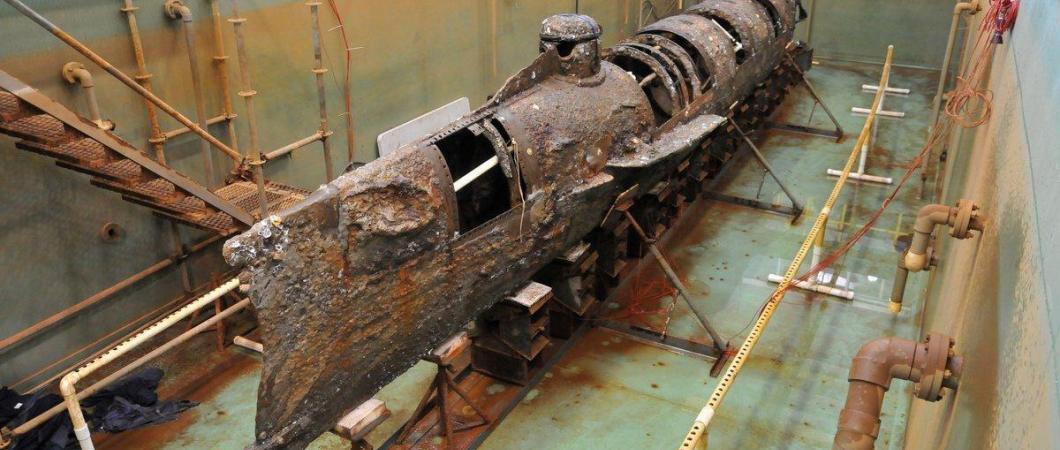
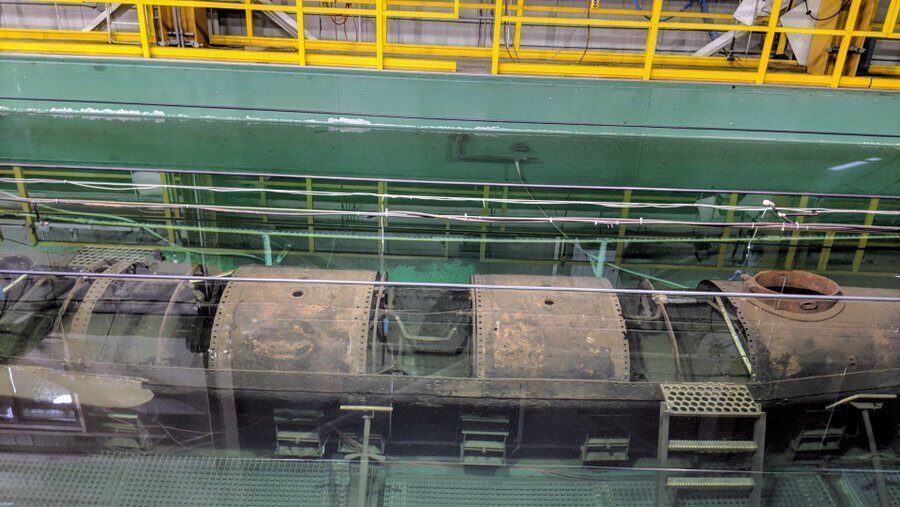
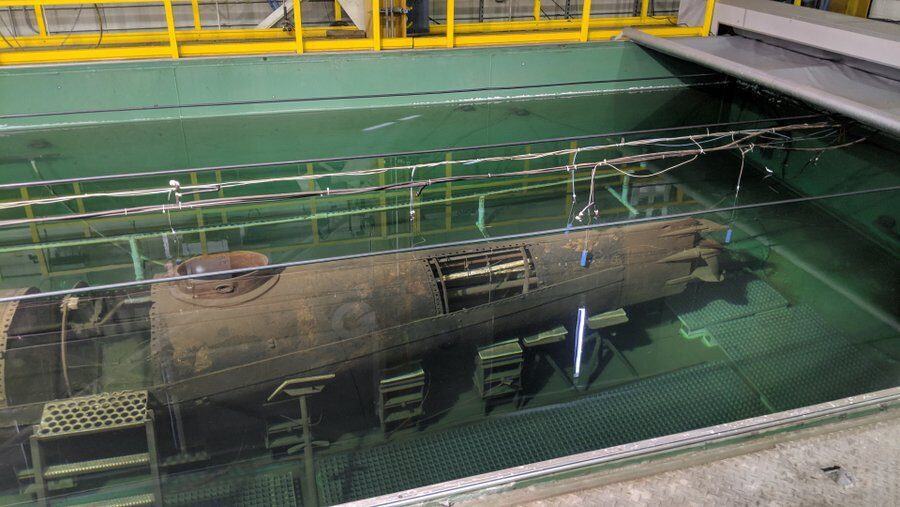
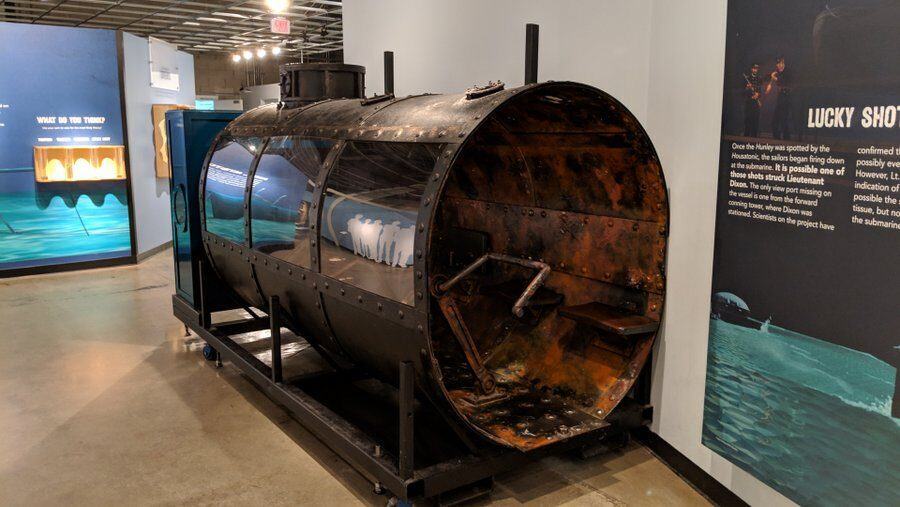
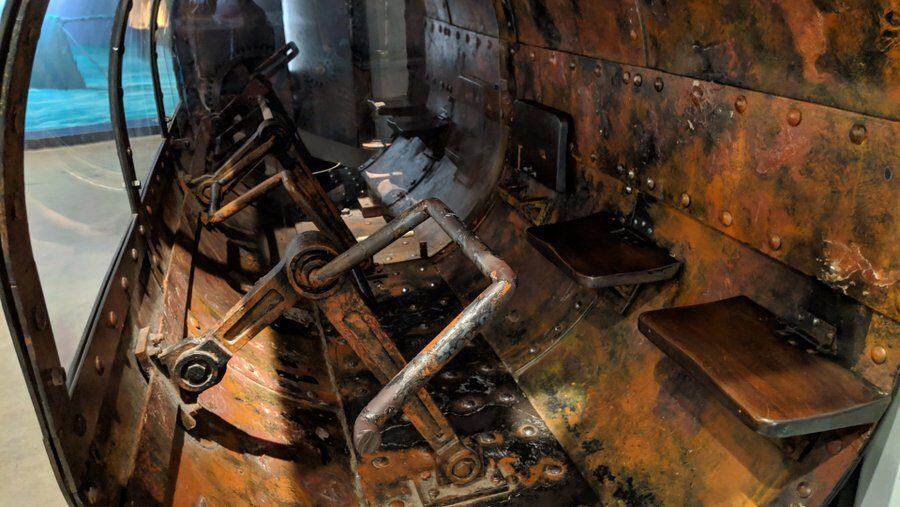
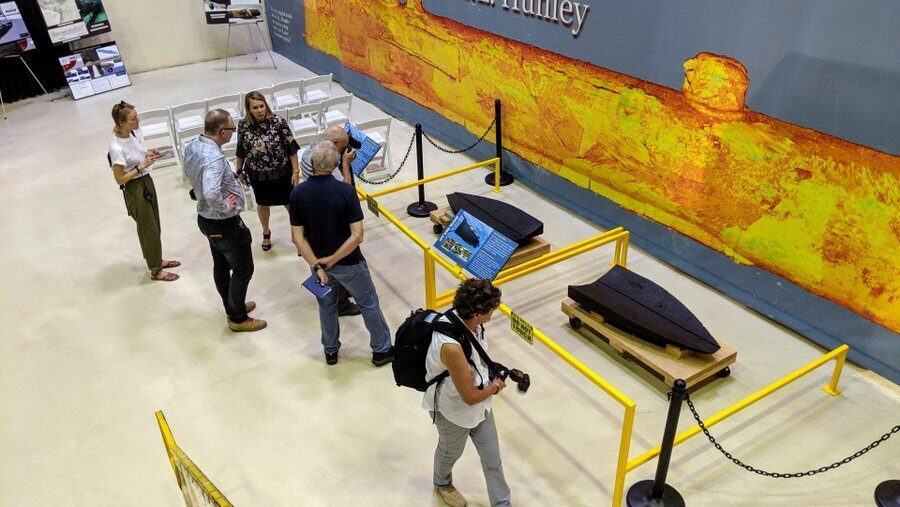
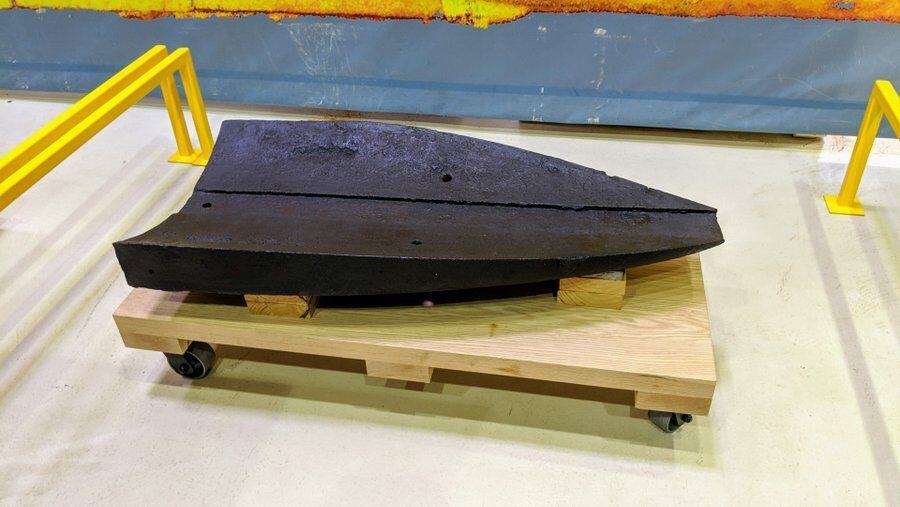



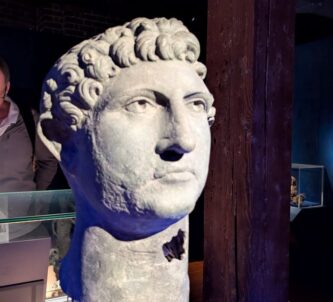


“In the Waves” by Rachel Vance, gives full scientific proof that shock wave trauma was responsible for the death of the crew of the Hunley. Furthermore she did it without the support of the “Friends of the Hunley”, which is probably why her evidence is not mentioned at the museum. I highly recommend reading the book.
Interesting, thanks Glen. Yes, I certainly lean toward the concussion trauma theory. Do you have an ISBN number for the book? Neither Amazon nor Google are showing it.
the nationality mentioned of the crew of the hunley is the typical stereotypic american vay of viewing the rest of the World. one exmple is Johan Frederik Carlsen from Rudkøbing town in Denmark. You call him European, he himself if asked would have called himself DANISH — NEVER EUROPEAN. esp during thuse unlucky times when Denmark was on the brink of war with Germany. Your sence of history is at its best — superficial.
Hi Sune, Sorry you were offended.
Good to know Johan Frederik Carlsen was Danish. I didn’t have that info.
No matter, I was referring to the the forensic analysis of their bones which established that some of the crew were of ‘European’ origin, because their diet was based on variants of corn found on the European side of the Atlantic, not the American. Unfortunately, having low levels of carbon-13 in his bones didn’t narrow him down to either Denmark or Rudkøbing. I’m glad to find his exact provenance has since been established.
… and, re-reading your comment by chance just now, Sune, it occured to me that you wrote it thinking I was American? No. As it happens I call myself “European” and not “British” though sadly I won’t be able to in just 5 weeks time!